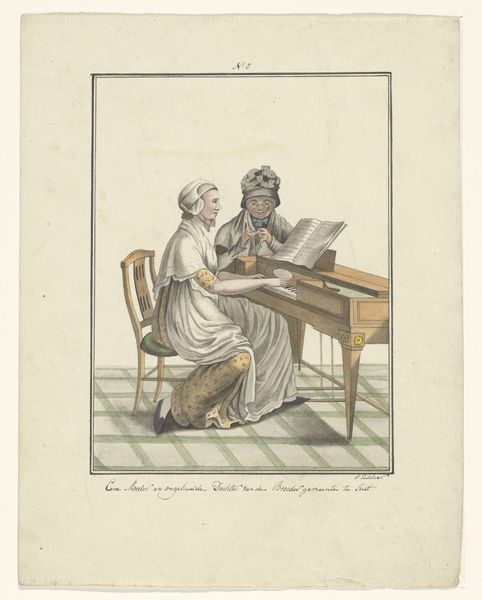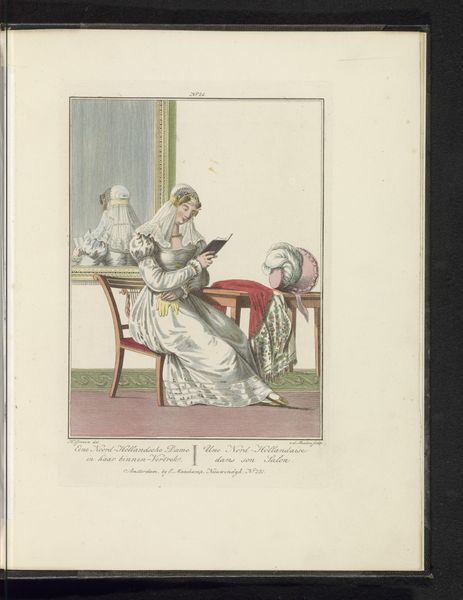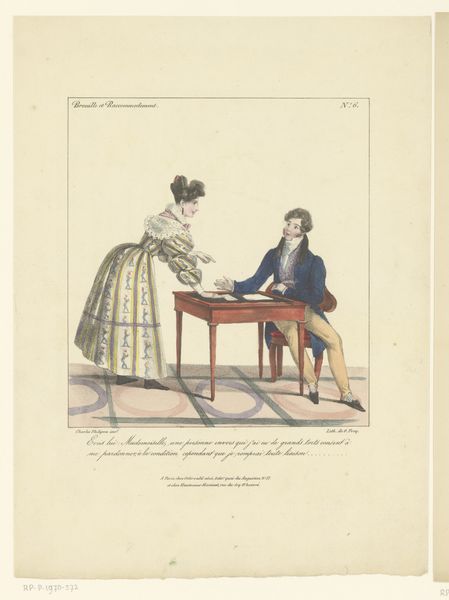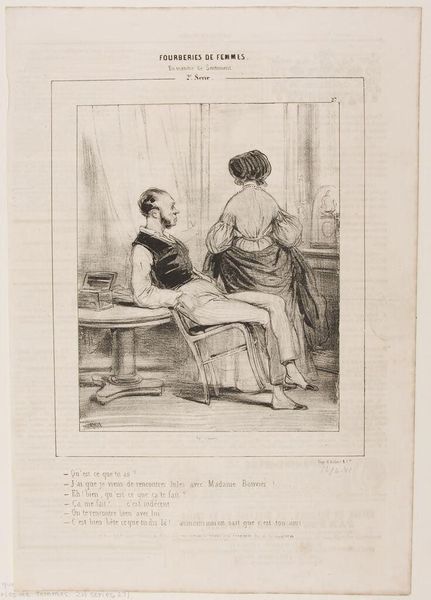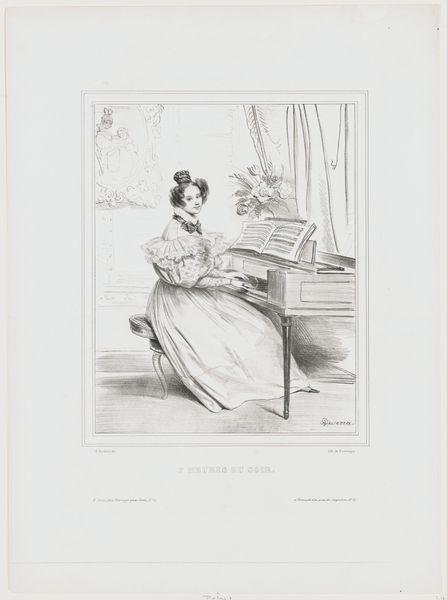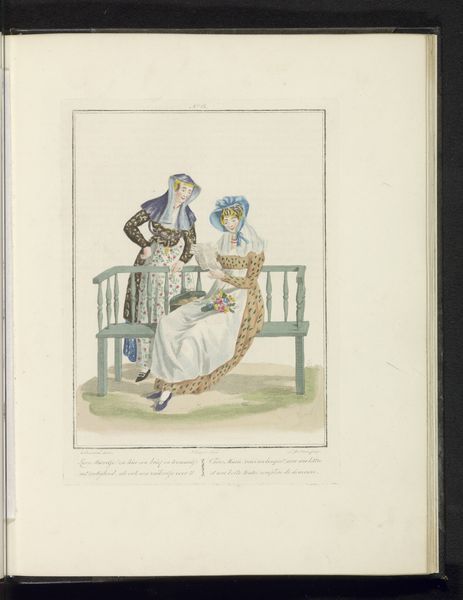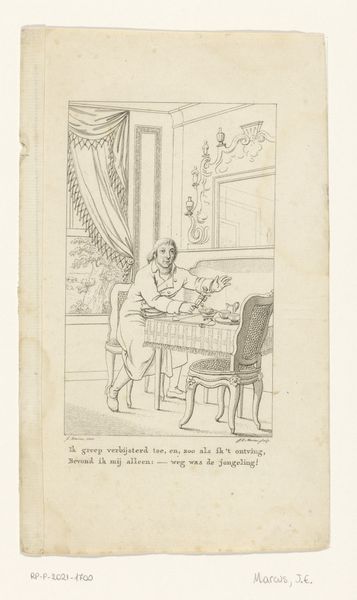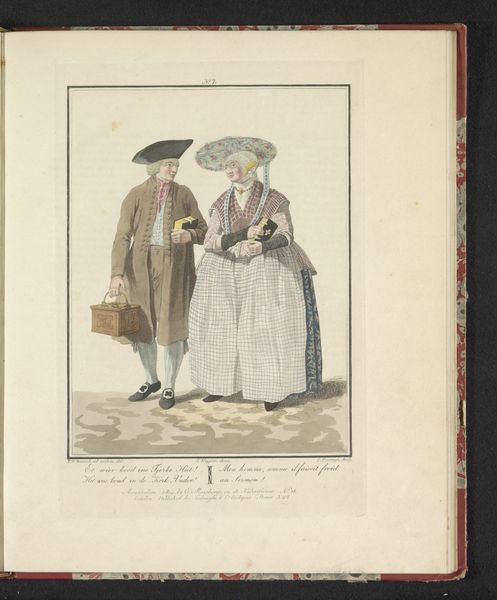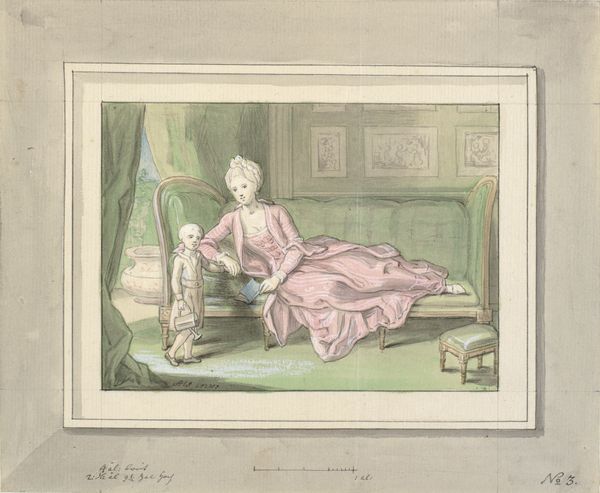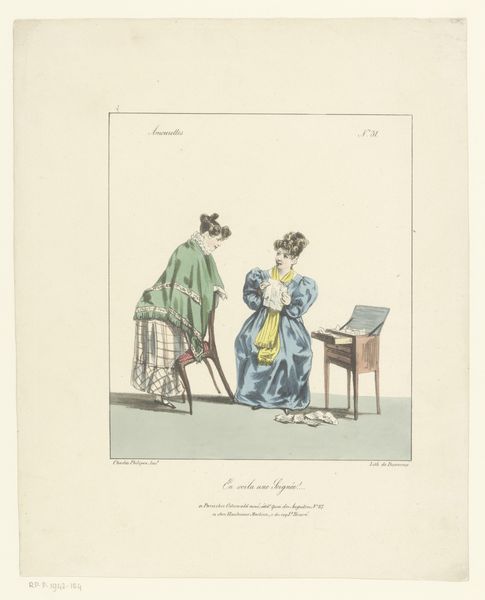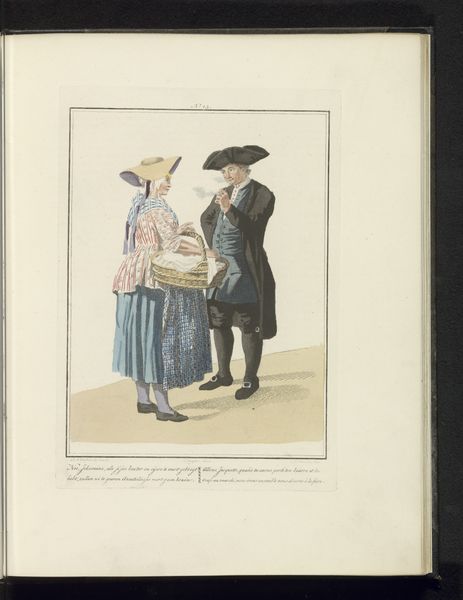
Moeder en dochter van de Evangelische Broedergemeente 1803 - 1829
0:00
0:00
tempera, print, watercolor
#
portrait
#
tempera
# print
#
watercolor
#
romanticism
#
costume
#
genre-painting
Dimensions: height 240 mm, width 158 mm
Copyright: Rijks Museum: Open Domain
Curator: Looking at "Mother and Daughter of the Evangelical Brotherhood" likely made between 1803 and 1829, I immediately notice its air of quiet domesticity. It is done with tempera, watercolor, and printmaking, showcasing delicate detail. What's your initial take? Editor: There's a certain restraint in the image, isn’t there? The palette is muted, the expressions contained. I'm curious about the symbolism behind this careful portrayal of familial piety. Who was Portman, and what historical contexts were informing his hand here? Curator: Ludwig Gottlieb Portman captures this scene, reflecting the Romantic era's preoccupation with interiority, genre-painting and the idealization of family. However, we have to contextualize it within the Evangelical Brotherhood's ethos. Their emphasis on personal piety, education, and community all factor into this image. Consider gender. How were women of the Brotherhood expected to live and behave, what norms were they bound by? Editor: The costumes become telling symbols then. The mother’s simple cap, the daughter's… unusual headwear. These are markers of identity within this very specific community. The harpsichord, though, stands out. What did music represent to the Evangelical Brotherhood? Is it a representation of leisure or something more deeply symbolic of learning, personal expression or maybe something spiritual? Curator: Absolutely. Music was integral, seen as a pathway to spiritual connection. This image celebrates not only the familial bond but also shared spiritual practices. Moreover, how might music education empowered these women within their specific societal role, at that moment in time? Was it more than entertainment or decorum? Editor: It could have represented something about control too, both structural and internalized. Consider, too, the daughter's gesture: her gaze fixed on the music as though there is little deviation permitted. So what cultural memories persist or conflict in such images today? The work creates a certain aesthetic appeal while offering something socially insightful, even critical, right? Curator: Precisely. While at first glance it feels gentle, beneath lies a complex web of faith, gender roles, and the power of visual representation in constructing identities within a specific historical frame. It reminds us that even seemingly simple images contain intricate cultural coding that requires careful interpretation and a solid grasp of sociohistorical context. Editor: A reminder that images often reveal as much by what they conceal. Thanks, this has shifted how I understand the work. Curator: Indeed. Looking at this together offers such a richness to appreciating its layers.
Comments
No comments
Be the first to comment and join the conversation on the ultimate creative platform.

